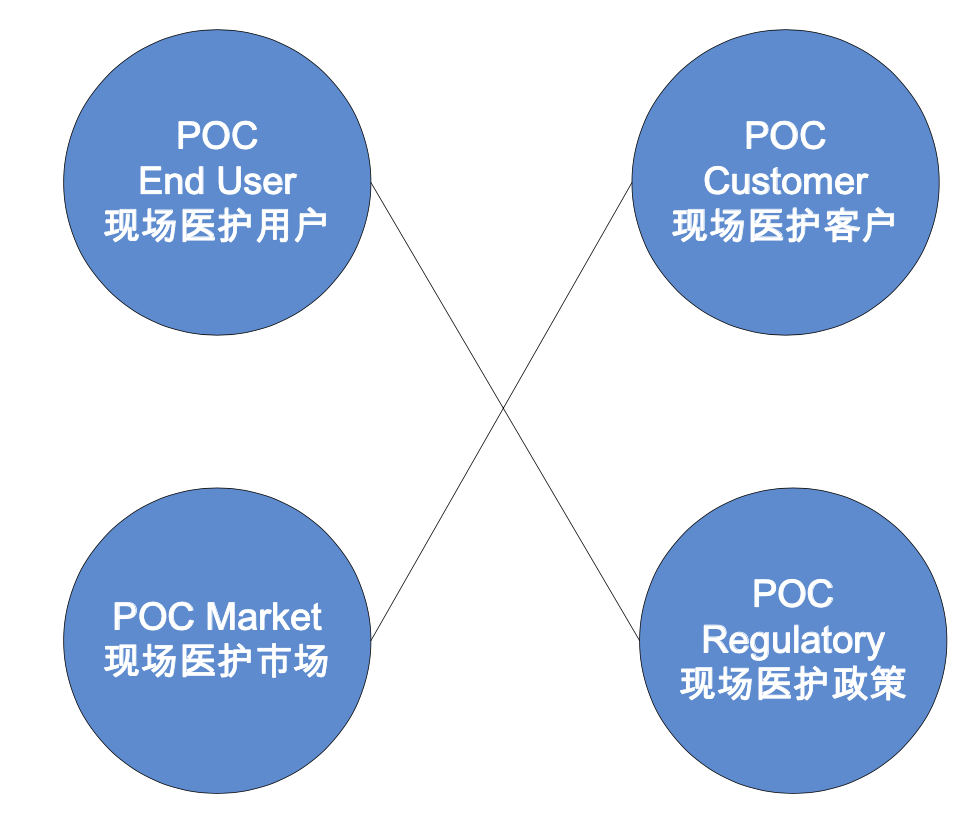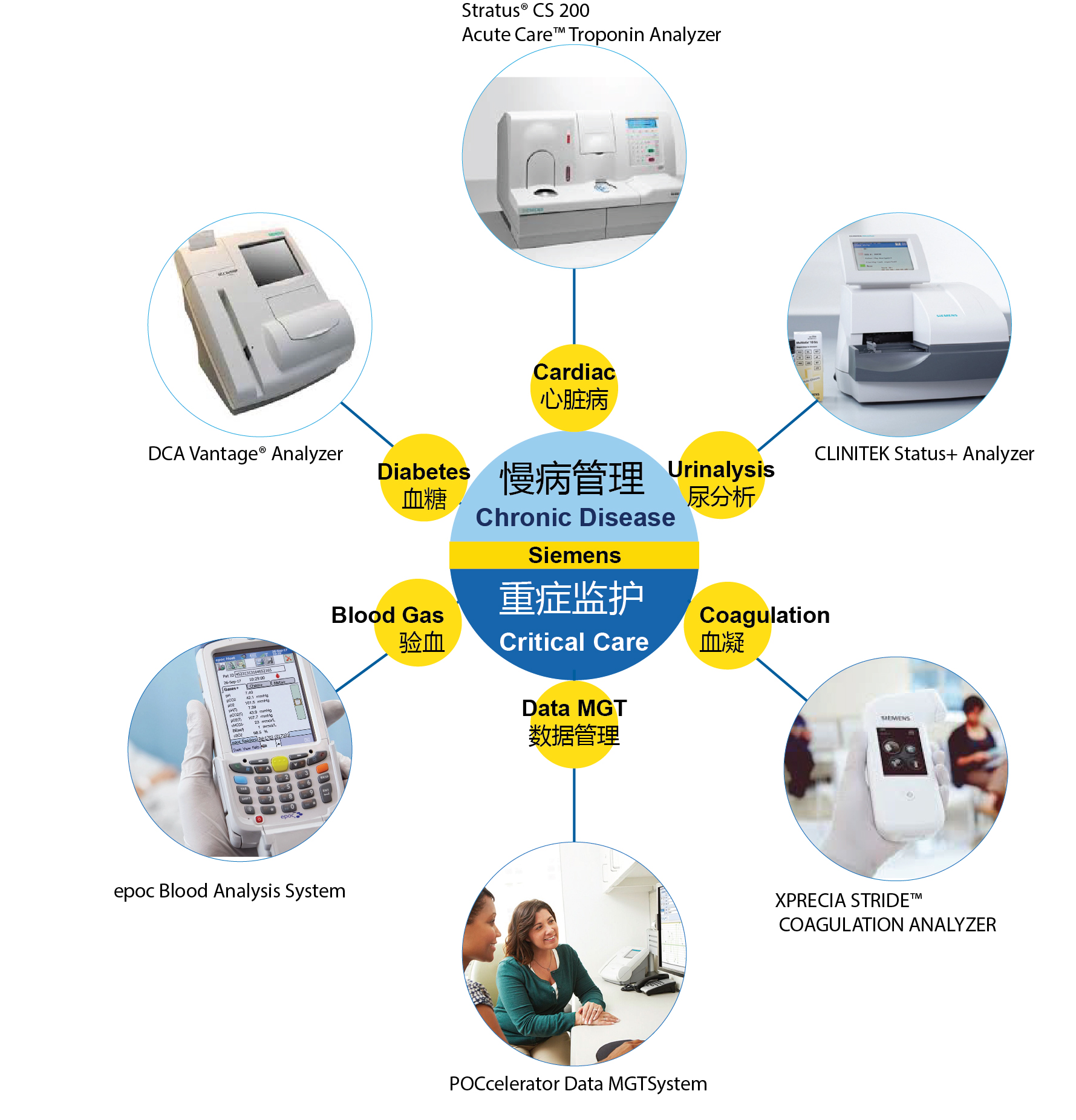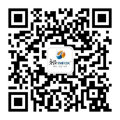POCT(现场医护技术)的创新与投资研究
优质医疗资源的短缺和老百姓对医疗健康的需求是一个全球性的问题,在此研究报告中,弈投医疗健康研究团队基于患者需求变化、优质医疗资源分布、国内外案例等多维度客观分析论证POCT(现场医护技术)的创新路径和投资价值,并对POCT赋能基层医疗提供案例建议。
70%以上的患者已经具备消费者特质
- 患者将比医生更善于使用互联网信息工具。他们不再像过去一样对医生言听计从,而是要求诊疗过程全透明化;
- 从未有过的信息化发展,使患者开始倾向于使用各种便利工具对健康和疾病进行自我管理。患者已具有一定的基础医疗知识和对疾病预防的渴望,并希望能够平等的与医疗机构协同互动;
- 在过去10年里,随着中国医疗健康产业各种管理政策的非延续性调整,患者对价格和效果更加敏感。他们希望能够“清楚消费,明确结果”。
2010年到2019年,是人工智能和移动互联在中国医疗市场急速扩张的10年,也是患者的行为特质向消费者行为转变的黄金十年。移动医疗或互联网医疗在传统医疗体系中的不断创新,促使患者在健康消费方面变得更成熟。根据弈投的研究数据显示:在人口密度相对比较高、经济发达地区,43%左右的初诊患者在预约医生前会通过互联网或者参考书籍获取相关健康状况或疾病的基础知识;12%左右的初诊患者会通过互联网虚拟医生进行试探性诊断;8%左右的患者会对医生的诊断进行对比,以确认诊断结果的可靠性以及收费的合理性。
德勤2019全球健康产业消费者行为调研报告[1]指出:在新加坡,38%的患者更倾向于对医生的诊断结果产生质疑,美国的同类数据为27%;在对医生的诊断结果完全不苟同的方面,美国的为23%,新加坡为6%,丹麦22%。
弈投抽样调研数据显示:虽然中国78%以上的医生更倾向于患者不要过于迷信非医院医生的诊断或者建议,但医生却无法拒绝患者对就医环节透明性的要求,这个趋势在未来10年无法阻挡。
德勤数据显示,全球范围内40%的消费者正在使用各种健康相关技术工具,其中60%采用家庭类健康管理工具对身体状况进行监测。虽然苹果公司在硬件方面销售呈下降趋势,但Market Realist分析[2]指出,2019年来自服务方面的收入占比达到21%。基于苹果公司在医疗健康工具方面的创新和收购(Fitbits, Gliimpse),Business Insider预测到2027年苹果公司来自健康领域的收入将达到3000亿美金[3]. CBINSIGHTS引用FDA专员Scott Gottlieb的话说[4]:“新的医疗设备通过对消费者赋能,使他们能够更好地了解自己的健康状况,并更好地管理自己的医疗保健。”
弈投研究数据显示:和10年前相比,76%以上的中国患者对医疗的消费和产出更为敏感,因为有更多的渠道对医院、医生和医疗服务质量进行比较,包括价格、 满意度、口碑等方面,并可以在诸多的社交媒体上进行互动讨论。同类的数据美国为53%,新加坡为45%。同时,根据中国家国统计局数据显示:从2014到2018年间,中国居民个人医疗支出的年增长率超过11%,与此同时,政府在医疗方面的支出呈下降趋势,年递减率为2-3%[5]。
案例研究:基层医疗机构的现状和挑战
因此医疗机构应该从宏观上重新定位自己与患者的关系,并优化服务流程与服务内容,这是保证医疗服务质量,提高患者满意度的根本所在
按照国家政策及医疗生态,至少80%以上的医疗服务应该下沉在基层,但目前实际情况是60%以上的门诊量由3.3万家综合医院分担。
医疗设备、信息化平台与优质医护的匮乏是基层医疗机构最主要的短板。
从2014年到2018年间,虽然基层医疗机构数量的年平均增长率只有0.71%, 但是数量依然是综合医院的30倍以上。根据国家统计局数据显示[5],这个期间,基层医疗机构承担的门诊量不到40%,剔除部分可能包含的共卫服务如疫苗注射等就诊人次,基层医疗机构实际承接的门诊量估计在30%左右(如表-1所示)。

全球POC市场预测
- 在未来全球POCT端的检测、诊断和健康管理市场的年复合增长率为9.6%,其中以中国和印度为代表的新兴市场的年复合增长率超过14.2%;
- 人口老龄化和慢性病流行的趋势,使得POCT 技术在基层医疗临床的作用尤为突出;
- 用户体验成为POCT创新方向的指南针;
Users of Point of Care
German scholar Dr. Sandeep Kurmar Vashit defined POCT as a technology that can provide real-time detection, monitoring, and health management at the point of implementation of medical care; and is characterised as being real-time, rapid, and cost-efficient [7]. Although Chinese research institutions tend to classified POCT as a branch of in vitro diagnostics (IVD), a manuscript that is published on the international medical journal Point of Care in September 2019 believes that as the development of artificial intelligence and next-generation detection technology, patients behavior shift, as well as increasing pressures of healthcare system and continuous health policy adjustment in many countries, China, the United States and other large countries have launched Point of Careology as an independent program in post-secondary education. Through technology innovation, policy adjustments, the community based clinics will be gradually transformed into the primary forces for providing medical and health services [8]. And the users of POCT are defined as community hospitals, critical care unit, family doctors and third-party laboratory testing institutions.
In the future, the global POCT testing, diagnosis and health management market will grow at a compound annual growth rate of 9.6%, with emerging markets represented by China and India growing at a compound annual growth rate of more than 14.2%
The aging of the population and chronic disease epidemics make POCT technology particularly prominent in primary care clinics;
User experience has become a guideline for POCT innovation
The global POCT market in 2018 is $18 billion. It is predicted that by 2026, the size of the global POCT market will reach approximately $50 billion, with a compound annual growth rate (CAGR) of 9.6%. Emerging markets such as China and India have a conservative CAGR of 14.2% due to a weaker starting medical infrastructure. Factors that drive the growth are listed below:
Scientific and technology innovation: Through constant investment in research and development, the diagnostic devices is made more compact (convenient), laboratory automation and artificial intelligence technology are continuously improved (time efficient), and low-cost high-quality medical solutions are emerging (cost efficient), all of which will be the driving force behind the rapid market growth.
Market demand: The prevalence of chronic diseases and the growth of the elderly population have boosted the market demand. According to the International Diabetes Federation, approximately 425 million adults worldwide have be diagnosed diabetes in 2017-18, and this population is expected to rise to 629 million by 2045 [9]. The POCT blood glucose meter and hemoglobin A1C instrument has been clinically proven to increase the medical compliance of diabetic patients and make blood glucose management more convenient and effective.
Capital market: Growing funding available from multiple public foundations is also driving the growth of the POCT market. In November 2018, the Massachusetts Medical Device Development Center, has received a $ 7.9 million funding from National Institutes of Health (NIH) that is designated for advancing Point-of-Care Technologies. Many private entities such as Dartmouth College, California Polytechnic, and global organizations have also participated in the POCT development program. In August 2018, the American Society of Clinical Chemistry announced a certification program for POC testing professionals to improve their diagnostic testing outside the clinical laboratory.
Application: With the better understanding the advantages of POCT by doctors and patients, who are more inclined to use POCT devices. POCT operation does not require much professional skills, thus small clinics and medical department can use this type of devices for diagnosis without hiring senior staff, which is one of the key driving forces to the market. Patients hope that the POC service can create better customer experiences and the doctors hope the medical procedure can be empowered. Therefore, they will be eager to share data with trusted partners, and they want their own health data to create an harmonious eco-system, which allow them to view and access numerous services anytime, anywhere, and not be hurdled by the obscure management system.
Case study: Siemens POCT and service solution
On November 7, 2016, Siemens Healthineers announced the acquisition of Conworx Technology GmbH, a German provider of POC data and open connection system, which kicked off Siemens’ own POC ecosystem.
According to the official introduction of the Siemens Health Department, Conworx Technology GmbH’s POC-based service solution is integrated into two subsystems: 1) data that focuses on the redesign of primary medical workflow and 2) POCcelerator Data Management System; a data management system based on intelligent operation efficiency, which can connect and manage all types of POC devices on a single platform, or scale up with UniPOC Data Management System [10].
Once the integration was accomplished, Siemens Health Department formed a POC product series with data management system as the foundation; chronic disease management and intensive care as the application scenarios; and blood, urine, blood glucose, heart, and blood coagulation as the final testing product, which are compatible with 2,800 types of diagnostic devices world-widely, as shown below:
Siemens product family at POC
POCT innovation direction
In the past 5 years, international giants such as Siemens, Abbott, Roche and Johnson & Johnson have continuously expanded their penetration into the POCT market through internal R & D, mergers and acquisitions, though this area was not appreciated by them back to 5 years ago. Representative startup companies such as iHealth Lab, Cellmix, and Alere also continue to make breakthroughs in subdivided fields. However, through the research and analysis of related technologies by the TMFOX medical team, we believe that: no matter it is medical equipment empowered by artificial intelligence, such as early screening and diagnosis of cancer, or detection equipment based on molecular technology, such as diagnosis of infectious diseases, or the detection products based on biosensing or biochip technology, the ideal POCT must be combined with the following functions in order to effectively integrate with primary medical care:
Empowerment for health management and compatibility with related data platforms;
Test or diagnosis can provide timely results, and no secondary technical confirmation is needed if possible;
Ability to continuously monitor changes in human condition and perform health assessments and early warnings;
Can provide therapeutic effect to some extent
At the same time, the accuracy requirements of POCT technology innovation exceed the ethical requirements for the quality of doctor services, which is the biggest problem of POCT technology innovation at present. Work efficiency and consumer costs are two other innovation indicators that must be considered.
POCT empowering health care will be the trend
In the future, market forces such as retail, insurance, internet, community service and other organizations will bring consumers together to participate in the innovation of the primary medical system. These forces will drive traditional medical institutions and regulators to make concessions and get involved in innovation.
In the next 10 years, the global economic will be in turmoil, relative to the short lifespan of new technologies and the weakness of fixed income investments, investments based on POC and POCT will provide safe returns and lead a growth trend (CAGR greater than 10%).
POCT’s technological innovations (artificial intelligence, automation, biosensors, biochips) can completely replace some of the human labor in the medical system. We have every reason to believe that machine learns faster than human does, and that machines are not affected by emotions and physical limit.
POC should be on the front line of healthcare and bear at least 80% of the outpatient volume. As long as the quality is guaranteed, the service is convenient, and the price is affordable, there will be no doubt that patients are willing to accept the proximate primary medical service.
In September 2019, a global retail giant Walmart opened its 10,000-square-foot clinic to public in Dallas. At the same time, Amazon care has completed its one year trail operation and officially opened to its three million employees in Seattle.
Similar to its main business positioning, Wal-Mart targets consumers within the radius of its own supermarket coverage, provides patients with diagnosis and treatment of acute and chronic diseases, and preventive services such as immunizations, physical examinations, health education, and other health check with low and transparent charges [11]. In addition to hiring full-time healthcare workers, Wal-Mart encourages its employees to participate in health education and support.
Similar to Wal-Mart’s original intention, Amazon also entered the field of health care in order to overcome the high medical costs of employees and the poor quality of medical services, and has become the second cross-border robber. Amazon uses a combined service of physical clinics and virtual diagnosis and treatment. Communication between patients and doctors can be achieved through the network, and it is equipped with medicine delivery or direct home delivery services.
Elise Amez-Droz, the director of healthcare policy at the Mercatus Center at George Mason University comments on Wal-Mart clinic: Wal-Mart Healthcare indicated that private institution can provide high-quality, transparent healthcare services without government intervention. And the best way to meet up patients’ changing medical needs is to give patients the final authority in making healthcare decisions.
Endnotes
Deloitte’s 2019 global health care consumer survey finds that the future is now:
Why Apple’s Services Segment Is Critical to Its Growth
Apple Is Going After The Healthcare Industry, Starting With Personal Health Data
How Apple could generate $313 billion from healthcare in 2027 — and why it won’t
https://baike.baidu.com/item/POCT
< Point-of-Care Technologies Enabling Next-Generation Healthcare Monitoring and Management> by Sandeep kurmar Vashit, 2019
《The creation of point-of-careology》, point of care Journal 2019.9
Acknowledge
We thank those who have provided comments and suggestions in this research work, and pay tribute to their enthusiasm and responsibility for promoting primary-level medical innovation (regardless of ranking):
Yu Huang –Chair, royal capital , shenzhen| Bio
Liang xing Wu – Chair, Shenzhen Jifu Medical| Bio
Dr. Liang Xiao – Director, Cancer department, Shenzhen N.2 Hospital | Bio
Dr. Dahai Zhang – Post Doctor fellow, BC Child &women Hospital| Bio
Authors
ANDY YU |Bio| Andy@1.13.1.253
Mr. Yu founded TMFOX VENTURE PARTNERS in Shenzhen in 2009. He has been committed to building an innovative investment banking business platform that integrates incubation, acceleration, and investment to enhance the growth of high-tech companies, and has actively participated in it. To the construction of the science and technology service system of the Guangdong-Hong Kong-Macao Greater Bay Area Regional Government. In 2015, TMFOX’s virtual incubation model was promoted nationwide by the Policy Research Office of the State Council as a representative institution. In 2017, he cooperated with the School of Management and Engineering of Central University of Finance and Economics to set up an entrepreneurial innovation experimental class and acted as a technical innovation course tutor. In 2018, the experimental class became a demonstration project of university education reform by the Ministry of Education. In 2018, TMFOX’s professional virtual incubation system was established as the technology incubation industry standard by Guangdong Province. Mr. Yu has been working on North American healthcare research and collaborative implementation of project resources in China since 2015. Currently he focuses on managing Worldiscoveries (North American Medical College Alliance), UW (University of Washington) School of Life Technology, UBC (University of British Columbia) ) Collaborative R & D and technology marketization of medical schools.
Dr. XIAOJIA XIONG|BIO| 784314077@qq.com
Dr. Xiong graduated from the Medical College of Sun Yat-sen University (PhD), and is a practitioner and innovator of Chinese medicine. For a long time, Dr. Xiong was engaged in front-line medical service work at Peking University Shenzhen Hospital, including serving as the chief physician and resident chief physician. Dr. Xiong has successively held senior management and strategic planning work in several doctor groups and primary clinics, and has extensive clinical experience and innovation and planning experience in primary medical systems.
微信扫描下方的二维码阅读更多精彩内容







